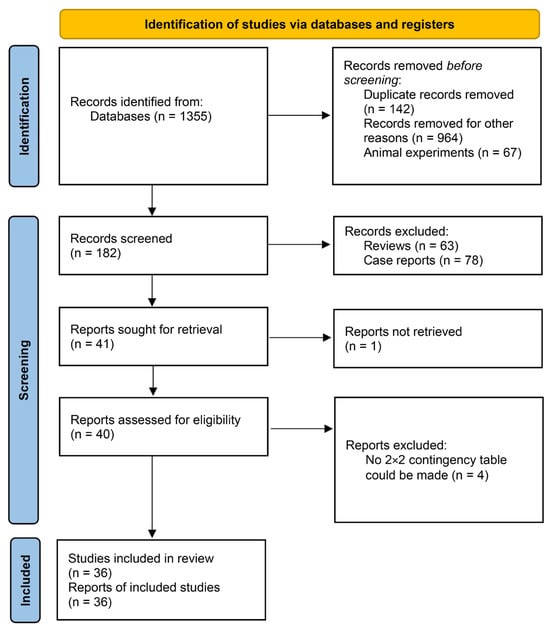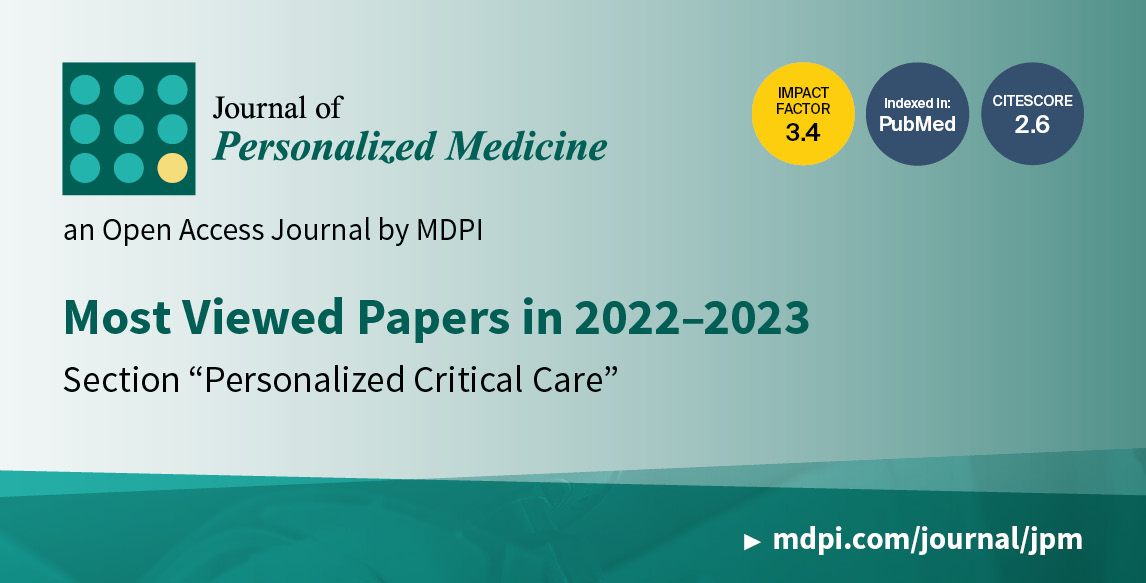-
 The Relationship between Fine Particle Matter (PM2.5) Exposure and Upper Respiratory Tract Diseases
The Relationship between Fine Particle Matter (PM2.5) Exposure and Upper Respiratory Tract Diseases -
 Adult Congenital Heart Disease in the Emergency Department
Adult Congenital Heart Disease in the Emergency Department -
 Low CDKN1B Expression Associated with Reduced CD8+ T Lymphocytes Predicts Poor Outcome in Breast Cancer in a Machine Learning Analysis
Low CDKN1B Expression Associated with Reduced CD8+ T Lymphocytes Predicts Poor Outcome in Breast Cancer in a Machine Learning Analysis -
 Sepsis Stewardship: The Puzzle of the Antibiotic Therapy in the Context of Individualization of Decision Making
Sepsis Stewardship: The Puzzle of the Antibiotic Therapy in the Context of Individualization of Decision Making -
 Inhibitors of Immune Checkpoints: Small Molecule- and Peptide-Based Approaches
Inhibitors of Immune Checkpoints: Small Molecule- and Peptide-Based Approaches
Journal Description
Journal of Personalized Medicine
Journal of Personalized Medicine
is an international, peer-reviewed, open access journal on personalized medicine, published monthly online by MDPI.
- Open Access— free for readers, with article processing charges (APC) paid by authors or their institutions.
- High Visibility: indexed within Scopus, SCIE (Web of Science), PubMed, PMC, Embase, and other databases.
- Journal Rank: JCR - Q2 (Medicine, General & Internal) CiteScore - Q2 (Medicine (miscellaneous))
- Rapid Publication: manuscripts are peer-reviewed and a first decision is provided to authors approximately 17.8 days after submission; acceptance to publication is undertaken in 2.6 days (median values for papers published in this journal in the second half of 2023).
- Recognition of Reviewers: reviewers who provide timely, thorough peer-review reports receive vouchers entitling them to a discount on the APC of their next publication in any MDPI journal, in appreciation of the work done.
Impact Factor:
3.4 (2022);
5-Year Impact Factor:
3.5 (2022)
Latest Articles
Preoperative Ultrasound for the Prediction of Postinduction Hypotension: A Systematic Review and Meta-Analysis
J. Pers. Med. 2024, 14(5), 452; https://doi.org/10.3390/jpm14050452 (registering DOI) - 25 Apr 2024
Abstract
Postinduction hypotension (PIH) is closely associated with postoperative adverse outcomes. Preoperative hypovolemia is a key risk factor, and many parameters are available from ultrasound to detect hypovolemia, but the accuracy of PIH from ultrasound remains unclear. This systematic review and meta-analysis aimed to
[...] Read more.
Postinduction hypotension (PIH) is closely associated with postoperative adverse outcomes. Preoperative hypovolemia is a key risk factor, and many parameters are available from ultrasound to detect hypovolemia, but the accuracy of PIH from ultrasound remains unclear. This systematic review and meta-analysis aimed to evaluate the commonly used measurements from ultrasound to predict PIH. We searched the PubMed, Cochrane Library, Embase, CNKI, and Web of Science databases from their inception to December 2023. Thirty-six studies were included for quantitative analysis. The pooled sensitivities for the inferior vena cava collapsibility index (IVC-CI), maximum inferior vena cava diameter (DIVCmax), minimum inferior vena cava diameter (DIVCmin), and carotid artery corrected flow time (FTc) were 0.73 (95% CI = 0.65, 0.79), 0.66 (95% CI = 0.54, 0.77), 0.74 (95% CI = 0.60, 0.85), and 0.81 (95% CI = 0.72, 0.88). The pooled specificities for the IVC-CI, DIVCmax, DIVCmin, and carotid artery FTc were 0.82 (95% CI = 0.75, 0.87), 0.75 (95% CI = 0.66, 0.82), 0.76 (95% CI = 0.65, 0.84), and 0.87 (95% CI = 0.77, 0.93). The AUC for the IVC-CI, DIVCmax, DIVCmin, and carotid artery FTc were 0.84 (95% CI = 0.81, 0.87), 0.77 (95% CI = 0.73, 0.81), 0.82 (95% CI = 0.78, 0.85), and 0.91 (95% CI = 0.88, 0.93). Our study demonstrated that ultrasound indices are reliable predictors for PIH. The carotid artery FTc is probably the optimal ultrasound measurement for identifying patients who will develop PIH in our study.
Full article
(This article belongs to the Special Issue Precision Emergency Medicine)
►
Show Figures
Open AccessArticle
Restoration of Pulmonary Compliance after Laparoscopic Gynecologic Surgery Using a Recruitment Maneuver
by
Panagiota Griva, Christina Talliou, Loizos Rougeris, Dimitra Samara, Konstantina Panagouli, Giolanda Varvarousi, Maria Papa, Nikolaos Kathopoulis, Vasiliki Chantziara and Nikoletta Rovina
J. Pers. Med. 2024, 14(5), 451; https://doi.org/10.3390/jpm14050451 (registering DOI) - 25 Apr 2024
Abstract
Background/Objectives: This study aimed to investigate the hypothesis that an alveolar recruitment maneuver can restore lung compliance to initial values after laparoscopic gynecological surgery. Methods: A total of 31 patients who underwent laparoscopic gynecological surgery were enrolled. Protective mechanical ventilation was applied, and
[...] Read more.
Background/Objectives: This study aimed to investigate the hypothesis that an alveolar recruitment maneuver can restore lung compliance to initial values after laparoscopic gynecological surgery. Methods: A total of 31 patients who underwent laparoscopic gynecological surgery were enrolled. Protective mechanical ventilation was applied, and the radial artery was catheterized in all patients. An alveolar recruitment maneuver (incremental and decremental positive end-expiratory pressure) was applied ten minutes after the release of pneumoperitoneum. The respiratory mechanics and blood gas results were recorded at eight different time points: after induction of anesthesia (T1), in the lithotomy position (T2), in the Trendelenburg position (T3), 10 and 90 min after insufflation of carbon dioxide (T4 and T5), in the supine position (T6), after desufflation (T7), and 10 min after an alveolar recruitment maneuver at the end of surgery (T8). Results: Pneumoperitoneum and the Trendelenburg position caused a decline of 15 units in compliance (T7 vs. T1; p < 0.05) compared to baseline. After the alveolar recruitment maneuver, compliance increased by 17.5% compared with the mean value of compliance at time T1 (T8 vs. T1; p < 0.05). The recruitment maneuver had favorable results in patients with low initial compliance (41.5 mL/cmH2O, IQR: 9.75 mL/cmH2O), high Body Mass Index 30.32 kg/m2 (IQR: 1.05 kg/m2), and high initial plateau airway pressure (16.5 cmH2O, IQR: 0.75 cmH2O). Conclusions: Lung compliance does not return to initial values after performing laparoscopic gynecological procedures. However, after the release of pneumoperitoneum, an alveolar recruitment maneuver is beneficial as it improves compliance and gas exchange.
Full article
(This article belongs to the Special Issue Obstetrics and Gynecology and Women's Health)
►▼
Show Figures

Graphical abstract
Open AccessArticle
Evaluation of a 3D Printed Silicone Oral Cavity Cancer Model for Surgical Simulations
by
Donovan Eu, Michael J. Daly, Stefano Taboni, Axel Sahovaler, Ashley N. Gilbank and Jonathan C. Irish
J. Pers. Med. 2024, 14(5), 450; https://doi.org/10.3390/jpm14050450 (registering DOI) - 25 Apr 2024
Abstract
Adequate surgical margins are essential in oral cancer treatment, this is, however, difficult to appreciate during training. With advances in training aids, we propose a silicone-based surgical simulator to improve training proficiency for the ablation of oral cavity cancers. A silicone-based tongue cancer
[...] Read more.
Adequate surgical margins are essential in oral cancer treatment, this is, however, difficult to appreciate during training. With advances in training aids, we propose a silicone-based surgical simulator to improve training proficiency for the ablation of oral cavity cancers. A silicone-based tongue cancer model constructed via a 3D mold was compared to a porcine tongue model used as a training model. Participants of varying surgical experience were then asked to resect the tumors with clear margins, and thereafter asked to fill out a questionnaire to evaluate the face and content validity of the models as a training tool. Eleven participants from the Otolaryngology-Head and Neck Surgery unit were included in this pilot study. In comparison to the porcine model, the silicone model attained a higher face (4 vs. 3.6) and content validity (4.4 vs. 4.1). Tumor consistency was far superior in the silicone model compared to the porcine model (4.1 vs. 2.8, p = 0.0042). Fellows and staff demonstrated a better margin clearance compared to residents (median 3.5 mm vs. 1.0 mm), and unlike the resident group, there was no incidence of positive margins. The surgical simulation was overall useful for trainees to appreciate the nature of margin clearance in oral cavity cancer ablation.
Full article
(This article belongs to the Special Issue Precision Medicine for Head and Neck Surgery)
►▼
Show Figures

Figure 1
Open AccessArticle
Naïve Inflammatory Proteome Profiles of Glucocorticoid Responsive Polymyalgia Rheumatica and Rheumatic Arthritis Patients—Links to Triggers and Proteomic Manifestations
by
Allan Stensballe, Jacob Skallerup Andersen, Christopher Aboo, Anders Borg Andersen, Jie Ren, Michael Kruse Meyer, Kate Lykke Lambertsen and Peter Derek Christian Leutscher
J. Pers. Med. 2024, 14(5), 449; https://doi.org/10.3390/jpm14050449 (registering DOI) - 25 Apr 2024
Abstract
Polymyalgia rheumatica (PMR) is an inflammatory disorder of unknown etiology, sharing symptoms with giant cell arthritis (GCA) and rheumatoid arthritis (RA). The pathogenic inflammatory roots are still not well understood, and there is a lack of extensive biomarker studies to explain the disease
[...] Read more.
Polymyalgia rheumatica (PMR) is an inflammatory disorder of unknown etiology, sharing symptoms with giant cell arthritis (GCA) and rheumatoid arthritis (RA). The pathogenic inflammatory roots are still not well understood, and there is a lack of extensive biomarker studies to explain the disease debut and post-acute phase. This study aimed to deeply analyze the serum proteome and inflammatory response of PMR patients before and after glucocorticoid treatment. We included treatment-naïve PMR patients, collecting samples before and after 3 months of treatment. For comparison, disease-modifying antirheumatic drug (DMARD)-naïve RA patients were included and matched to healthy controls (CTL). The serum proteome was examined using label-free quantitative mass spectrometry, while inflammation levels were assessed using multiplex inflammatory cytokine and cell-free DNA assays. The serum proteomes of the four groups comprised acute phase reactants, coagulation factors, complement proteins, immunoglobulins, and apolipoproteins. Serum amyloid A (SAA1) was significantly reduced by active PMR treatment. Cell-free DNA levels in PMR and RA groups were significantly higher than in healthy controls due to acute inflammation. Complement factors had minimal changes post-treatment. The individual serum proteome in PMR patients showed over 100 abundantly variable proteins, emphasizing the systemic impact of PMR disease debut and the effect of treatment. Interleukin (IL)-6 and interferon-gamma (IFN-γ) were significantly impacted by glucocorticoid treatment. Our study defines the PMR serum proteome during glucocorticoid treatment and highlights the role of SAA1, IL-6, and IFN-γ in treatment responses. An involvement of PGLYRP2 in acute PMR could indicate a response to bacterial infection, highlighting its role in the acute phase of the immune response. The results suggest that PMR may be an aberrant response to a bacterial infection with an exacerbated IL-6 and acute phase inflammatory response and molecular attempts to limit the inflammation.
Full article
(This article belongs to the Special Issue Personalized Medicine in Rheumatology—towards Adapting Our Care to Manifold Patient Phenotypes)
►▼
Show Figures
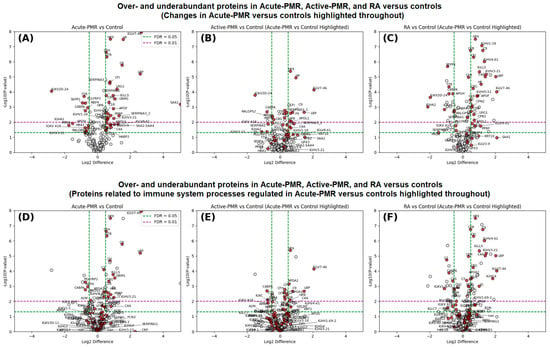
Figure 1
Open AccessArticle
Automated Evaluation of Ellipsoid Zone At-Risk Burden for Detection of Hydroxychloroquine Retinopathy
by
Katherine E. Talcott, Gagan Kalra, Hasan Cetin, Yavuz Cakir, Jon Whitney, Jordan Budrevich, Jamie L. Reese, Sunil K. Srivastava and Justis P. Ehlers
J. Pers. Med. 2024, 14(5), 448; https://doi.org/10.3390/jpm14050448 (registering DOI) - 25 Apr 2024
Abstract
Background: Screening for hydroxychloroquine (HCQ) retinopathy is crucial to detecting early disease. A novel machine-learning-based optical coherence tomography (OCT) biomarker, Ellipsoid Zone (EZ) At-Risk, can quantitatively measure EZ alterations and at-risk areas for progressive EZ loss in a fully automated fashion. The purpose
[...] Read more.
Background: Screening for hydroxychloroquine (HCQ) retinopathy is crucial to detecting early disease. A novel machine-learning-based optical coherence tomography (OCT) biomarker, Ellipsoid Zone (EZ) At-Risk, can quantitatively measure EZ alterations and at-risk areas for progressive EZ loss in a fully automated fashion. The purpose of this analysis was to compare the EZ At-Risk burden in eyes with HCQ toxicity to eyes without toxicity. Methods: IRB-approved image analysis study of 83 subjects on HCQ and 44 age-matched normal subjects. SD-OCT images were reviewed for evidence of HCQ retinopathy. A ML-based, fully automatic measurement of the percentage of the macular area with EZ At-Risk was performed. Results: The mean age for HCQ subjects was 67.1 ± 13.2 years and 64.2 ± 14.3 years for normal subjects. The mean EZ At-Risk macular burden in the “toxic” group (n = 38) was significantly higher (10.7%) compared to the “non-toxic” group (n = 45; 2.2%; p = 0.023) and the “normal” group (1.4%; p = 0.012). Additionally, the amount of EZ At-Risk burden was significantly correlated with the HCQ dose based on the actual (p = 0.016) and ideal body weight (p = 0.033). Conclusions: The novel biomarker EZ-At Risk was significantly higher in subjects with evidence of HCQ retinopathy as well as significantly associated with HCQ dose. This novel biomarker should be further evaluated as a potential screening tool for subjects on HCQ.
Full article
(This article belongs to the Special Issue Imaging Biomarkers for Retinal Diseases: Prognostic Tools and Novel Clinical Trial Endpoints for Precision Medicine)
►▼
Show Figures
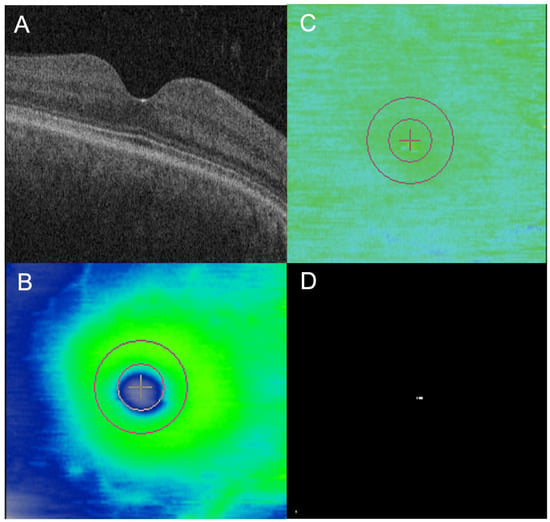
Figure 1
Open AccessArticle
Attitudes of Jordanian Anesthesiologists and Anesthesia Residents towards Artificial Intelligence: A Cross-Sectional Study
by
Isam Bsisu, Rami Alqassieh, Abdelkarim Aloweidi, Abdulrahman Abu-Humdan, Aseel Subuh and Deema Masarweh
J. Pers. Med. 2024, 14(5), 447; https://doi.org/10.3390/jpm14050447 (registering DOI) - 25 Apr 2024
Abstract
Success in integrating artificial intelligence (AI) in anesthesia depends on collaboration with anesthesiologists, respecting their expertise, and understanding their opinions. The aim of this study was to illustrate the confidence in AI integration in perioperative anesthetic care among Jordanian anesthesiologists and anesthesia residents
[...] Read more.
Success in integrating artificial intelligence (AI) in anesthesia depends on collaboration with anesthesiologists, respecting their expertise, and understanding their opinions. The aim of this study was to illustrate the confidence in AI integration in perioperative anesthetic care among Jordanian anesthesiologists and anesthesia residents working at tertiary teaching hospitals. This cross-sectional study was conducted via self-administered online questionnaire and includes 118 responses from 44 anesthesiologists and 74 anesthesia residents. We used a five-point Likert scale to investigate the confidence in AI’s role in different aspects of the perioperative period. A significant difference was found between anesthesiologists and anesthesia residents in confidence in the role of AI in operating room logistics and management, with an average score of 3.6 ± 1.3 among residents compared to 2.9 ± 1.4 among specialists (p = 0.012). The role of AI in event prediction under anesthesia scored 3.5 ± 1.4 among residents compared to 2.9 ± 1.4 among specialists (p = 0.032) and the role of AI in decision-making in anesthetic complications 3.3 ± 1.4 among residents and 2.8 ± 1.4 among specialists (p = 0.034). Also, 65 (55.1%) were concerned that the integration of AI will lead to less human–human interaction, while 81 (68.6%) believed that AI-based technology will lead to more adherence to guidelines. In conclusion, AI has the potential to be a revolutionary tool in anesthesia, and hesitancy towards increased dependency on this technology is decreasing with newer generations of practitioners.
Full article
(This article belongs to the Section Personalized Critical Care)
Open AccessReview
Enhancing Lung Cancer Care in Portugal: Bridging Gaps for Improved Patient Outcomes
by
Raquel Ramos, Conceição Souto Moura, Mariana Costa, Nuno Jorge Lamas, Renato Correia, Diogo Garcez, José Miguel Pereira, Carlos Sousa and Nuno Vale
J. Pers. Med. 2024, 14(5), 446; https://doi.org/10.3390/jpm14050446 (registering DOI) - 24 Apr 2024
Abstract
Lung cancer has the highest incidence and cancer-related mortality worldwide. In Portugal, it ranks as the fourth most common cancer, with nearly 6000 new cases being diagnosed every year. Lung cancer is the main cause of cancer-related death among males and the third
[...] Read more.
Lung cancer has the highest incidence and cancer-related mortality worldwide. In Portugal, it ranks as the fourth most common cancer, with nearly 6000 new cases being diagnosed every year. Lung cancer is the main cause of cancer-related death among males and the third cause of cancer-related death in females. Despite the globally accepted guidelines and recommendations for what would be the ideal path for a lung cancer patient, several challenges occur in real clinical management across the world. The recommendations emphasize the importance of adequate screening of high-risk individuals, a precise tumour biopsy, and an accurate final diagnosis to confirm the neoplastic nature of the nodule. A detailed histological classification of the lung tumour type and a comprehensive molecular characterization are of utmost importance for the selection of an efficacious and patient-directed therapeutic approach. However, in the context of the Portuguese clinical organization and the national healthcare system, there are still several gaps in the ideal pathway for a lung cancer patient, involving aspects ranging from the absence of a national lung cancer screening programme through difficulties in histological diagnosis and molecular characterization to challenges in therapeutic approaches. In this manuscript, we address the most relevant weaknesses, presenting several proposals for potential solutions to improve the management of lung cancer patients, helping to decisively improve their overall survival and quality of life.
Full article
(This article belongs to the Section Personalized Critical Care)
Open AccessArticle
Nerve Regeneration after a Nerve Graft in a Rat Model: The Effectiveness of Fibrin Glue
by
Giovanni Zabbia, Francesca Toia, Federico Coppola, Giovanni Cassata, Luca Cicero, Giuseppe Giglia, Roberto Puleio and Adriana Cordova
J. Pers. Med. 2024, 14(5), 445; https://doi.org/10.3390/jpm14050445 - 24 Apr 2024
Abstract
Background: Simulating the post-traumatic continuity defect of small human peripheral nerves, we compared the effectiveness of fibrin glue with neurorrhaphy for nerve gap restoration. Methods: In twenty-four male Wistar rats, a fifteen mm defect in one sciatic nerve only was made and immediately
[...] Read more.
Background: Simulating the post-traumatic continuity defect of small human peripheral nerves, we compared the effectiveness of fibrin glue with neurorrhaphy for nerve gap restoration. Methods: In twenty-four male Wistar rats, a fifteen mm defect in one sciatic nerve only was made and immediately repaired with an inverted polarity autograft. According to the used technique, rats were divided into Group A (Control), using traditional neurorrhaphy, and Group B (Study), using fibrine glue sealing; in total, 50% of rats were sacrificed at 16 weeks and 50% at 21 weeks. Before sacrifice, an assessment of motor function was done through Walking Track Analysis and an electroneurophysiological evaluation. After sacrifice, selected muscle mass indexes and the histology of the regenerated nerves were assessed. All data were evaluated by Student’s t test for unpaired data. Results: No significant differences were found between the two groups, with only the exception of a relative improvement in the tibialis anterior muscle’s number of motor units in the study group. Conclusion: Despite the fact that the use of fibrin glue as a nerve sealant is not superior in terms of functional recovery, its effectiveness is comparable to that of microsurgical repair. Hence, the faster and technically easier glueing technique could deserve broader clinical application.
Full article
(This article belongs to the Section Regenerative Medicine and Therapeutics)
Open AccessArticle
Real-Life Prognosis of Sinonasal Tumors
by
Giancarlo Pecorari, Gian Marco Motatto, Federica Piazza, Alessandro Garzaro and Giuseppe Riva
J. Pers. Med. 2024, 14(5), 444; https://doi.org/10.3390/jpm14050444 - 24 Apr 2024
Abstract
Background: Sinonasal cancer represents a challenging disease because of its difficult diagnosis and different histology. Despite a multidisciplinary evaluation and treatments, a poor prognosis is still present. We retrospectively analyzed patients with sinonasal cancer treated in our institution, paying attention to histology and
[...] Read more.
Background: Sinonasal cancer represents a challenging disease because of its difficult diagnosis and different histology. Despite a multidisciplinary evaluation and treatments, a poor prognosis is still present. We retrospectively analyzed patients with sinonasal cancer treated in our institution, paying attention to histology and real-life prognosis. Methods: A total of 51 consecutive patients were included in the study. Clinical features were described. Overall, disease-free, and disease-specific survival (OS, DFS, DSS) according to histology were calculated. Kaplan–Meyer estimator curves were reported. Results: The most prevalent primary tumor was squamous cell carcinoma, followed by adenocarcinoma. Global 2- and 5-year OS was 68.80% and 54.58%, respectively. Global 2- and 5-year DFS was 48.53% and 29.56%, while global 2- and 5-year DSS was 82.86% and 74.57%, respectively. The median OS was 74 and 43 months for early- and late-stage cancer, respectively. The Cox multivariate regression analysis did not reveal any statistically significant effects of age, stage, or histology on survival outcomes. Conclusions: The diagnosis is often late and the prognosis poor. An appropriate treatment, which is always quite multimodal, allows us to achieve a global 5-year OS slightly higher than 50%. An adequate diagnosis to increase the percentage of early-stage tumors is mandatory to improve prognosis.
Full article
(This article belongs to the Special Issue Current Status and Future Research in Otorhinolaryngology)
►▼
Show Figures

Figure 1
Open AccessReview
Clearing the Fog: A Scoping Literature Review on the Ethical Issues Surrounding Artificial Intelligence-Based Medical Devices
by
Alessia Maccaro, Katy Stokes, Laura Statham, Lucas He, Arthur Williams, Leandro Pecchia and Davide Piaggio
J. Pers. Med. 2024, 14(5), 443; https://doi.org/10.3390/jpm14050443 - 23 Apr 2024
Abstract
The use of AI in healthcare has sparked much debate among philosophers, ethicists, regulators and policymakers who raised concerns about the implications of such technologies. The presented scoping review captures the progression of the ethical and legal debate and the proposed ethical frameworks
[...] Read more.
The use of AI in healthcare has sparked much debate among philosophers, ethicists, regulators and policymakers who raised concerns about the implications of such technologies. The presented scoping review captures the progression of the ethical and legal debate and the proposed ethical frameworks available concerning the use of AI-based medical technologies, capturing key themes across a wide range of medical contexts. The ethical dimensions are synthesised in order to produce a coherent ethical framework for AI-based medical technologies, highlighting how transparency, accountability, confidentiality, autonomy, trust and fairness are the top six recurrent ethical issues. The literature also highlighted how it is essential to increase ethical awareness through interdisciplinary research, such that researchers, AI developers and regulators have the necessary education/competence or networks and tools to ensure proper consideration of ethical matters in the conception and design of new AI technologies and their norms. Interdisciplinarity throughout research, regulation and implementation will help ensure AI-based medical devices are ethical, clinically effective and safe. Achieving these goals will facilitate successful translation of AI into healthcare systems, which currently is lagging behind other sectors, to ensure timely achievement of health benefits to patients and the public.
Full article
(This article belongs to the Special Issue Artificial Intelligence Applied to Clinical Practice)
►▼
Show Figures

Figure 1
Open AccessArticle
Isolated Limb Perfusion and Immunotherapy in the Treatment of In-Transit Melanoma Metastases: Is It a Real Synergy?
by
Marco Rastrelli, Francesco Russano, Francesco Cavallin, Paolo Del Fiore, Claudia Pacilli, Claudia Di Prata, Carlo Riccardo Rossi, Antonella Vecchiato, Luigi Dall’Olmo and Simone Mocellin
J. Pers. Med. 2024, 14(5), 442; https://doi.org/10.3390/jpm14050442 - 23 Apr 2024
Abstract
Background: Isolated limb hyperthermic-antiblastic perfusion (ILP) was the most effective local treatment for advanced in-transit melanoma, but the advent of modern effective immunotherapy (IT), such as immune checkpoint inhibitors, has changed the treatment landscape. Methods: This study evaluated the role of the association
[...] Read more.
Background: Isolated limb hyperthermic-antiblastic perfusion (ILP) was the most effective local treatment for advanced in-transit melanoma, but the advent of modern effective immunotherapy (IT), such as immune checkpoint inhibitors, has changed the treatment landscape. Methods: This study evaluated the role of the association between ILP and IT in the treatment of locally advanced unresectable melanoma, particularly in relation to modern systemic therapies. We analyzed 187 consecutive patients who were treated with ILP (melphalan or melphalan associated with TNF-alpha) for advanced melanoma at the Veneto Institute of Oncology of Padua (Italy) and the Padua University Hospital (Italy) between June 1989 and September 2021. Overall survival (OS), disease-specific survival (DSS), local disease-free survival (local DFS) and distant disease-free survival (distant DFS) were evaluated. Local toxicity was classified according to the Wieberdink scale and surgical complications according to the Clavien–Dindo classification. Response to locoregional therapy was evaluated during follow-up according to the RECIST 1.1 criteria (Response Evaluation Criteria in Solid Tumor). Results: A total of 99 patients were treated with ILP and 88 with IT + ILP. The overall response rate was 67% in both groups. At 36 months, OS was 43% in the ILP group and 61% in the ILP + IT group (p = 0.02); DSS was 43% in the ILP group and 64% in the ILP + IT group (p = 0.02); local DFS was the 37% in ILP group and 53% in the ILP + IT group (p = 0.04); and distant DFS was 33% in the ILP group and 35% in the ILP + IT group (p = 0.40). Adjusting for age and lymph node involvement, receiving ILP + IT was associated with improved OS (p = 0.01) and DSS (p = 0.007) but not local DFS (p = 0.13) and distant DFS (p = 0.21). Conclusions: Our findings confirm the synergy between ILP and IT. ILP remains a valuable loco-regional treatment option in the era of effective systemic treatments. Further studies are needed to establish the optimal combination of loco-regional and systemic treatments and address the best timing of this combination to obtain the highest local response rate.
Full article
(This article belongs to the Special Issue New Insights into Personalized Surgical Oncology)
►▼
Show Figures
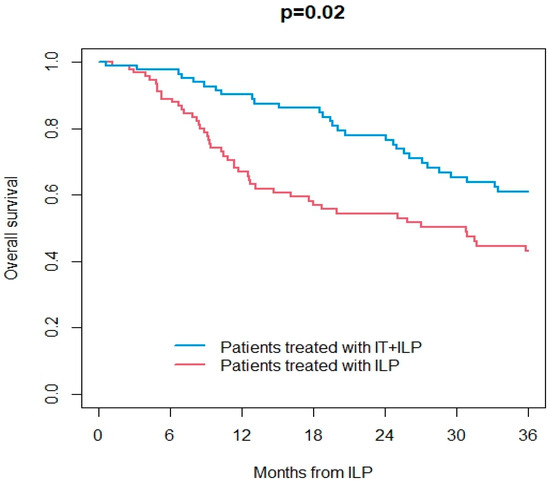
Figure 1
Open AccessArticle
Efficacy of Single- and Dual-Docking Robotic Surgery of Paraaortic and Pelvic Lymphadenectomy in High-Risk Endometrial Cancer
by
Magdalena Bizoń, Maciej Olszewski, Agnieszka Grabowska, Joanna Siudek, Krzysztof Mawlichanów and Radovan Pilka
J. Pers. Med. 2024, 14(5), 441; https://doi.org/10.3390/jpm14050441 - 23 Apr 2024
Abstract
(1) The surgical method of choice for the treatment of endometrial cancer is minimally invasive surgery. In cases of high-risk endometrial cancer, completed paraaortic and pelvic lymphadenectomy are indicated. The aim of this study was to analyze the types of docking during robotic
[...] Read more.
(1) The surgical method of choice for the treatment of endometrial cancer is minimally invasive surgery. In cases of high-risk endometrial cancer, completed paraaortic and pelvic lymphadenectomy are indicated. The aim of this study was to analyze the types of docking during robotic surgery assisted with the da Vinci X system while performing paraaortic and pelvic lymphadenectomy. (2) Methods: A total of 25 patients with high-risk endometrial cancer, with a mean age of 60.07 ± 10.67 (range 34.69–83.23) years, and with a mean body mass index (BMI) of 28.4 ± 5.62 (range 18–41.5) kg/m2, were included in this study. The analyzed population was divided into groups that underwent single or dual docking during surgery. (3) Results: No statistical significance was observed between single and dual docking during paraaortic and pelvic lymphadenectomy and between the type of docking and the duration of the operation. However, there was a statistically significant correlation between the duration of the operation and previous surgery (p < 0.005). The number of removed lymph nodes was statistically associated with BMI (p < 0.005): 15.87 ± 6.83 and 24.5 ± 8.7 for paraaortic and pelvic lymph nodes, respectively, in cases of single docking, and 18.05 ± 7.92 and 24.88 ± 11.75 for paraaortic and pelvic lymph nodes, respectively, in cases of dual docking. (4) Conclusions: The robot-assisted approach is a good surgical method for lymphadenectomy for obese patients, and, despite the type of docking, there are no differences in the quality of surgery.
Full article
(This article belongs to the Special Issue Advanced Minimally Invasive Surgery in Gynecology: Second Edition)
►▼
Show Figures
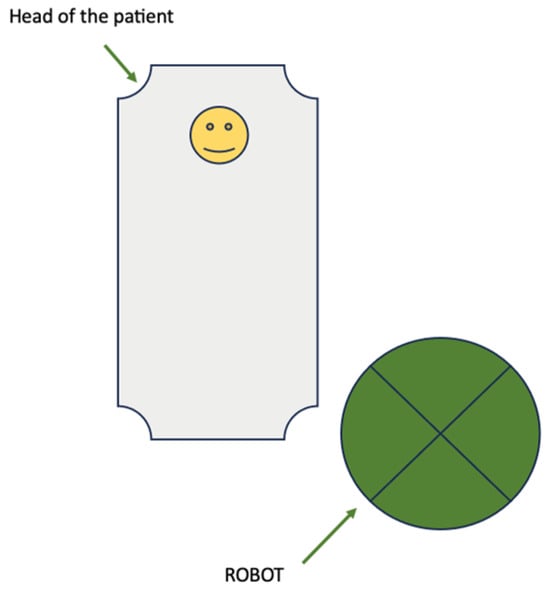
Figure 1
Open AccessArticle
The Impact of ABCC2 -24C>T Gene Polymorphism on Graft Survival in Kidney Transplant Recipients
by
Chiau Ling Choong, Farida Islahudin, Hin-Seng Wong, Rosnawati Yahya, Nor Asyikin Mohd Tahir and Mohd Makmor-Bakry
J. Pers. Med. 2024, 14(4), 440; https://doi.org/10.3390/jpm14040440 - 22 Apr 2024
Abstract
Personalized medicine in kidney transplantation has the potential to improve outcomes and reduce complications. The aim of this study was to investigate the influence of single nucleotide polymorphisms in genes encoding metabolizing enzymes (CYP3A5) and transporters (ABCC2) on clinical outcomes (acute graft failure
[...] Read more.
Personalized medicine in kidney transplantation has the potential to improve outcomes and reduce complications. The aim of this study was to investigate the influence of single nucleotide polymorphisms in genes encoding metabolizing enzymes (CYP3A5) and transporters (ABCC2) on clinical outcomes (acute graft failure and/or acute tubular necrosis (ATN)) in kidney transplant recipients (KTR). This was a multicenter, retrospective cohort study where adult KTR who had undergone kidney transplantation between 2020 and 2021 and received tacrolimus-mycophenolate treatment were enrolled in the study. DNA was extracted from collected blood samples using a commercially available kit. CYP3A5*3, ABCC2 -24C>T and ABCC2 3972C>T SNP were determined by polymerase chain reaction. Of the total 39 patients included, nine (23.1%) KTR had an incidence of acute graft failure and/or ATN. A multiple logistic regression showed wildtype ABCC2 -24C>T C allele had a higher risk of developing acute graft rejection and/or ATN compared to the variant allele carriers (adjusted Odd Ratios [aOR]: 27.675, p = 0.038). Recipients who had delayed graft function (aOR: 49.214, p = 0.012) and a history of CMV infection (aOR: 18.097, p = 0.009) were at 49.2 and 18.1-times increased risk for acute graft failure and/or ATN, respectively. The large aOR was inevitable due to the small sample size and required cautious interpretation. This is the first study to determine the effect of the ABCC2 -24C>T genetic polymorphism on clinical outcomes in Malaysian KTR and forms the basis for further work on ABCC2 -24C>T effects in long-term KTR.
Full article
(This article belongs to the Section Pharmacogenetics)
Open AccessArticle
Comparison of Surgical Outcomes of Two New Techniques Complementing Robotic Single-Site Myomectomy: Coaxial Robotic Single-Site Myomectomy vs. Hybrid Robotic Single-Site Myomectomy
by
Nara Lee, Su-Hyeon Choi, Seyeon Won, Yong-Wook Jung, Seung-Hyun Kim, Jin-Yu Lee, Chul-Kwon Lim, Jung-Bo Yang, Joong-Gyu Ha and Seok-Ju Seong
J. Pers. Med. 2024, 14(4), 439; https://doi.org/10.3390/jpm14040439 - 22 Apr 2024
Abstract
Background: This study aimed to compare surgical outcomes between two new robotic single-site myomectomy (RSSM)-complementary techniques: coaxial robotic single-site myomectomy (Coaxial-RSSM) and hybrid robotic single-site myomectomy (Hybrid-RSSM). Methods: Medical records for 132 women undergoing Coaxial-RSSM and 150 undergoing Hybrid-RSSM, consecutively, were retrospectively reviewed.
[...] Read more.
Background: This study aimed to compare surgical outcomes between two new robotic single-site myomectomy (RSSM)-complementary techniques: coaxial robotic single-site myomectomy (Coaxial-RSSM) and hybrid robotic single-site myomectomy (Hybrid-RSSM). Methods: Medical records for 132 women undergoing Coaxial-RSSM and 150 undergoing Hybrid-RSSM, consecutively, were retrospectively reviewed. Patient characteristics and surgical outcomes were assessed and compared after propensity score matching (PSM). Results: In the outcomes of PSM, the Coaxial-RSSM group showed significantly reduced blood loss (79.71 vs. 163.75 mL, p < 0.001) and reduced hospital duration (4.18 ± 0.62 vs. 4.63 ± 0.90) relative to the Hybrid-RSSM group. Conversely, Hybrid-RSSM allowed for a shorter operative time compared with Coaxial-RSSM (119.19 vs. 156.01 min, p = 0.007). No conversions to conventional laparoscopy or laparotomy or any need for the multi-site robotic approach occurred in either group. Postoperative complications, including ileus, fever, and wound dehiscence, showed no statistically significant differences between the two groups. Conclusions: Blood loss was lower with Coaxial-RSSM, and operative time was shorter for Hybrid-RSSM. A follow-up prospective study is warranted for more comprehensive comparison of surgical outcomes between the two techniques.
Full article
(This article belongs to the Special Issue Advanced Minimally Invasive Surgery in Gynecology: Second Edition)
Open AccessArticle
Coronary Intravascular Lithotripsy Effectiveness and Safety in a Real-World Cohort
by
Catarina Oliveira, Marta Vilela, Miguel Nobre Menezes, João Silva Marques, Cláudia Moreira Jorge, Tiago Rodrigues, José Almeida Duarte, José Marques da Costa, Pedro Carrilho Ferreira, Ana Rita Francisco, Pedro Pinto Cardoso and Fausto J. Pinto
J. Pers. Med. 2024, 14(4), 438; https://doi.org/10.3390/jpm14040438 - 22 Apr 2024
Abstract
Background: Coronary artery calcification is a predictor of adverse outcomes after percutaneous coronary intervention (PCI). Intravascular lithotripsy (IVL) is a promising tool for the treatment of calcified lesions. The aim of this study was to assess the effectiveness and safety of IVL.
[...] Read more.
Background: Coronary artery calcification is a predictor of adverse outcomes after percutaneous coronary intervention (PCI). Intravascular lithotripsy (IVL) is a promising tool for the treatment of calcified lesions. The aim of this study was to assess the effectiveness and safety of IVL. Methods: A single-center observational study of PCI procedure, with assessment of the outcomes of patients undergoing PCI using IVL, was performed. Angiographic procedural success was used as the primary effectiveness endpoint. The primary safety endpoint was defined as a composite of cardiac death, myocardial infarction and target vessel revascularization within 30 days. Results: A total of 111 patients were included. Indications for PCI spanned the spectrum of chronic (53.2%) and acute coronary syndromes (43%). Lesion preparation before IVL was performed with non-compliant (42%), cutting or OPN (14.4%) balloons and with atherectomy techniques in 11% of procedures. Intravascular imaging was used in 21.6% of procedures. The primary effectiveness endpoint was achieved in 100% and the primary safety endpoint in 3.6% of procedures. Peri-procedural complications were minimal and successfully resolved. Conclusions: IVL was an effective and safe technique for the treatment of calcified coronary lesions. These findings contribute to the growing body of evidence supporting the use of IVL in the management of these challenging scenarios.
Full article
(This article belongs to the Special Issue Coronary Syndromes: Clinical Research and Personalized Medicine)
►▼
Show Figures
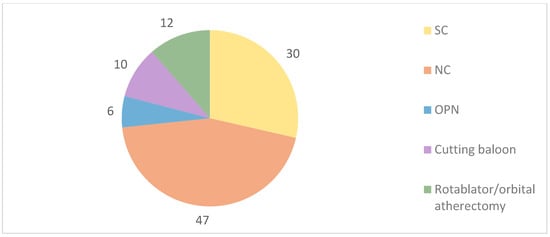
Figure 1
Open AccessArticle
Protection against Oxidative Stress by Coenzyme Q10 in a Porcine Retinal Degeneration Model
by
Leonie Deppe, Ana M. Mueller-Buehl, Teresa Tsai, Carl Erb, H. Burkhard Dick and Stephanie C. Joachim
J. Pers. Med. 2024, 14(4), 437; https://doi.org/10.3390/jpm14040437 - 22 Apr 2024
Abstract
Oxidative stress plays an important role in neurodegenerative diseases, including glaucoma. Therefore, we analyzed if the antioxidant coenzyme Q10 (CoQ10), which is also commercially available, can prevent retinal degeneration induced by hydrogen peroxide (H2O2) in a porcine organ culture
[...] Read more.
Oxidative stress plays an important role in neurodegenerative diseases, including glaucoma. Therefore, we analyzed if the antioxidant coenzyme Q10 (CoQ10), which is also commercially available, can prevent retinal degeneration induced by hydrogen peroxide (H2O2) in a porcine organ culture model. Retinal explants were cultivated for eight days, and H2O2 (500 µM, 3 h) induced the oxidative damage. CoQ10 therapy was applied (700 µM, 48 h). Retinal ganglion cells (RGCs) and microglia were examined immunohistologically in all groups (control, H2O2, H2O2 + CoQ10). Cellular, oxidative, and inflammatory genes were quantified via RT-qPCR. Strong RGC loss was observed with H2O2 (p ≤ 0.001). CoQ10 elicited RGC protection compared to the damaged group at a histological (p ≤ 0.001) and mRNA level. We detected more microglia cells with H2O2, but CoQ10 reduced this effect (p = 0.004). Cellular protection genes (NRF2) against oxidative stress were stimulated by CoQ10 (p ≤ 0.001). Furthermore, mitochondrial oxidative stress (SOD2) increased through H2O2 (p = 0.038), and CoQ10 reduced it to control level. Our novel results indicate neuroprotection via CoQ10 in porcine retina organ cultures. In particular, CoQ10 appears to protect RGCs by potentially inhibiting apoptosis-related pathways, activating intracellular protection and reducing mitochondrial stress.
Full article
(This article belongs to the Special Issue Glaucoma Management in the Era of Personalized Medicine)
►▼
Show Figures

Figure 1
Open AccessArticle
Computational Approach for Spatially Fractionated Radiation Therapy (SFRT) and Immunological Response in Precision Radiation Therapy
by
Paolo Castorina, Filippo Castiglione, Gianluca Ferini, Stefano Forte and Emanuele Martorana
J. Pers. Med. 2024, 14(4), 436; https://doi.org/10.3390/jpm14040436 - 21 Apr 2024
Abstract
The field of precision radiation therapy has seen remarkable advancements in both experimental and computational methods. Recent literature has introduced various approaches such as Spatially Fractionated Radiation Therapy (SFRT). This unconventional treatment, demanding high-precision radiotherapy, has shown promising clinical outcomes. A comprehensive computational
[...] Read more.
The field of precision radiation therapy has seen remarkable advancements in both experimental and computational methods. Recent literature has introduced various approaches such as Spatially Fractionated Radiation Therapy (SFRT). This unconventional treatment, demanding high-precision radiotherapy, has shown promising clinical outcomes. A comprehensive computational scheme for SFRT, extrapolated from a case report, is proposed. This framework exhibits exceptional flexibility, accommodating diverse initial conditions (shape, inhomogeneity, etc.) and enabling specific choices for sub-volume selection with administrated higher radiation doses. The approach integrates the standard linear quadratic model and, significantly, considers the activation of the immune system due to radiotherapy. This activation enhances the immune response in comparison to the untreated case. We delve into the distinct roles of the native immune system, immune activation by radiation, and post-radiotherapy immunotherapy, discussing their implications for either complete recovery or disease regrowth.
Full article
(This article belongs to the Section Omics/Informatics)
►▼
Show Figures
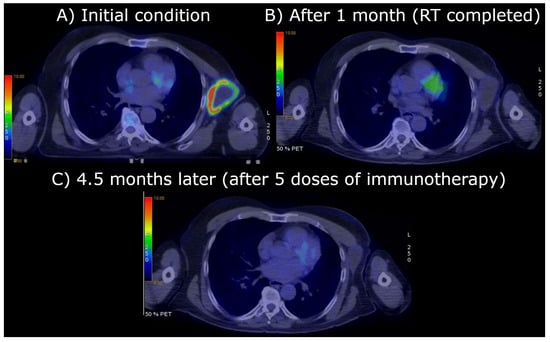
Figure 1
Open AccessReview
Autoimmunity in Syndromes of Orthostatic Intolerance: An Updated Review
by
Clarissa Pena, Abdelmoniem Moustafa, Abdel-Rhman Mohamed and Blair Grubb
J. Pers. Med. 2024, 14(4), 435; https://doi.org/10.3390/jpm14040435 - 20 Apr 2024
Abstract
Orthostatic intolerance is a broad term that represents a spectrum of dysautonomic disorders, including postural orthostatic tachycardia syndrome (POTS) and orthostatic hypotension (OH), as manifestations of severe autonomic failure. While the etiology of orthostatic intolerance has not yet fully been uncovered, it has
[...] Read more.
Orthostatic intolerance is a broad term that represents a spectrum of dysautonomic disorders, including postural orthostatic tachycardia syndrome (POTS) and orthostatic hypotension (OH), as manifestations of severe autonomic failure. While the etiology of orthostatic intolerance has not yet fully been uncovered, it has been associated with multiple underlying pathological processes, including peripheral neuropathy, altered renin–aldosterone levels, hypovolemia, and autoimmune processes. Studies have implicated adrenergic, cholinergic, and angiotensin II type I autoantibodies in the pathogenesis of orthostatic intolerance. Several case series have demonstrated that immunomodulation therapy resulted in favorable outcomes, improving autonomic symptoms in POTS and OH. In this review, we highlight the contemporary literature detailing the association of autoimmunity with POTS and OH.
Full article
(This article belongs to the Special Issue New Challenges and Perspectives in Neurology and Autonomic Disorders)
Open AccessArticle
Variation Analysis in Premenopausal and Postmenopausal Breast Cancer Cases
by
Ibrahim Halil Erdogdu, Seda Orenay-Boyacioglu, Olcay Boyacioglu, Duygu Gurel, Nurten Akdeniz and Ibrahim Meteoglu
J. Pers. Med. 2024, 14(4), 434; https://doi.org/10.3390/jpm14040434 - 20 Apr 2024
Abstract
Menopausal status affects the prognoses and consequences of breast cancer. Therefore, this retrospective study aimed to reveal the molecular variation profile differences in breast cancer patients according to their menopausal status, with the hypothesis that the molecular variation profiles will be different at
[...] Read more.
Menopausal status affects the prognoses and consequences of breast cancer. Therefore, this retrospective study aimed to reveal the molecular variation profile differences in breast cancer patients according to their menopausal status, with the hypothesis that the molecular variation profiles will be different at premenopausal and postmenopausal ages. Breast cancer patients (n = 254) who underwent molecular subtyping and QIAseq Human Breast Cancer NGS Panel screening between 2018 and 2022 were evaluated retrospectively. Their menopausal status was defined by age, and those aged 50 years and above were considered postmenopausal. Of the subjects, 58.66% (n = 149) were premenopausal and 41.34% (n = 105) were postmenopausal. The mean age at the time of diagnosis for all patients was 49.31 ± 11.19 years, with respective values of 42.11 ± 5.51 and 59.54 ± 9.01 years for the premenopausal and postmenopausal groups, respectively (p = 0.000). Among premenopausal patients, the percentages of patients in BCa subtypes (luminal A, luminal B-HER2(−), luminal B-HER2(+), HER2 positive, and triple-negative) were determined to be 34.90%, 8.05%, 26.17%, 10.74%, and 20.13%, respectively, while in the postmenopausal group, these values were 39.05%, 16.19%, 24.76%, 6.67%, and 13.33%, respectively (p > 0.05). Considering menopausal status, the distribution of hormone receptors in premenopausal patients was ER(+)/PgR(+) 63.76%, ER(−)/PgR(−) 23.49%, ER(+)/PgR(−) 10.74%, and ER(−)/PgR(+) 2.01%, respectively, while in postmenopausal women, this distribution was observed to be 74.29%, 23.81%, 1.90% and 0.00% in the same order (p = 0.008). The most frequently mutated gene was TP53 in 130 patients (51.18%), followed by PIK3CA in 85 patients (33.46%), BRCA2 and NF1 in 56 patients (22.05%), PTEN in 54 patients (21.26%), and ATR and CHEK2 in 53 patients (20.87%). TP53, PIK3CA, NF1, BRCA2, PTEN, and CHEK2 mutations were more frequently observed in premenopausal patients, while TP53, PIK3CA, BRCA2, BRCA1, and ATR mutations in postmenopausal patients. These findings contribute to a deeper understanding of the underlying causes of breast cancer with respect to menopausal status. This study is the first from Turkey that reflects the molecular subtyping and somatic mutation profiles of breast cancer patients according to menopausal status.
Full article
(This article belongs to the Special Issue Cancer Biomarker Research and Personalized Medicine 2.0)
►▼
Show Figures
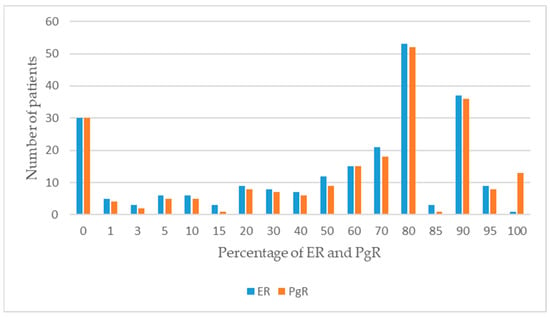
Figure 1
Open AccessArticle
Impact of Thrombophilic Polymorphisms in Antenatal Women on Perinatal Health: A Single-Center Prospective Study
by
Vesna Sokol Karadjole, Antonio D’Amato, Milan Milošević, Mislav Herman, Mislav Mikuš, Antonio Simone Laganà, Vito Chiantera and Andrea Etrusco
J. Pers. Med. 2024, 14(4), 433; https://doi.org/10.3390/jpm14040433 - 19 Apr 2024
Abstract
Background: Despite pregnancy’s hypercoagulable state, the correlation between inherited thrombophilia and thrombotic adverse pregnancy outcomes remains uncertain. The objective of this study was to determine the prevalence of inherited thrombophilic polymorphisms among asymptomatic pregnant individuals and to examine their potential correlation with adverse
[...] Read more.
Background: Despite pregnancy’s hypercoagulable state, the correlation between inherited thrombophilia and thrombotic adverse pregnancy outcomes remains uncertain. The objective of this study was to determine the prevalence of inherited thrombophilic polymorphisms among asymptomatic pregnant individuals and to examine their potential correlation with adverse perinatal outcomes. Methods: in this single-center prospective study, 105 healthy pregnant women were included. Genotyping was conducted for factor V Leiden (FVL), prothrombin gene mutation, methylenetetrahydrofolate reductase enzyme (MTHFR) C677T, MTHFR A1298C, and plasminogen activator inhibitor-1 (PAI-1), alongside the assessment of protein C (PC), protein S (PS), and antithrombin (AT) levels. The study analyzed the association between inherited thrombophilic polymorphisms and pregnancy complications linked to placental insufficiency, such as gestational hypertension (GH), preeclampsia (PE), intrauterine death (IUD), fetal growth restriction (FGR), and placental abruption. Results: The prevalence of identifiable thrombophilic polymorphism mutations was 61.9% (95% confidence interval—CI 52.4–70.8%), with the most common single mutation being PAI-1 4G/5G (12/105, 11.4%, 95% CI 6.4–18.5). The most frequent combined mutation was heterozygosity for MTHFR C677T and PAI-1 (12/105, 11.4%, 95% CI 6.4–18.5). Notably, no FVL homozygous carriers or single homozygous and heterozygous carriers for prothrombin polymorphisms were found. Additionally, no deficiencies in PC and AT were detected among participants. Except for homozygosity for PAI-1, none of the studied polymorphisms demonstrated a significant association with pregnancy complications linked to placental insufficiency. Conclusions: The asymptomatic carriers of inherited thrombophilic polymorphisms do not have an increased risk of adverse perinatal outcomes.
Full article
(This article belongs to the Special Issue Obstetrics and Gynecology and Women's Health)

Journal Menu
► ▼ Journal Menu-
- JPM Home
- Aims & Scope
- Editorial Board
- Reviewer Board
- Topical Advisory Panel
- Instructions for Authors
- Special Issues
- Topics
- Sections & Collections
- Article Processing Charge
- Indexing & Archiving
- Editor’s Choice Articles
- Most Cited & Viewed
- Journal Statistics
- Journal History
- Journal Awards
- Conferences
- Editorial Office
Journal Browser
► ▼ Journal BrowserHighly Accessed Articles
Latest Books
E-Mail Alert
News
Topics
Topic in
Biomolecules, Diagnostics, JCM, Metabolites, JPM, Nutrients
Metabolic Syndrome, Biomarkers and Lifestyles
Topic Editors: Sang Yeoup Lee, Young Hye ChoDeadline: 30 June 2024
Topic in
Biomedicines, JCM, JPM
Current Challenges and Advances in Skin Repair and Regeneration
Topic Editors: Giovanni Salzano, Chiara CopelliDeadline: 20 July 2024
Topic in
Clinics and Practice, JCM, JPM, Healthcare, Diagnostics
Pathology and Current State of Treatment of Chronic Pain
Topic Editors: Tatsunori Ikemoto, Young-Chang AraiDeadline: 31 July 2024
Topic in
Antibiotics, JPM, Pharmaceuticals, Pharmaceutics
Pharmacokinetic and Pharmacodynamic Modelling in Drug Discovery and Development
Topic Editors: Inaki F. Troconiz, Victor Mangas Sanjuán, Maria Garcia-Cremades MiraDeadline: 31 August 2024

Conferences
Special Issues
Special Issue in
JPM
Obstetrics and Gynecology and Women's Health
Guest Editor: Panagiotis N. TsikourasDeadline: 25 April 2024
Special Issue in
JPM
Novel and Personalized Treatment Concepts in Gynecologic Cancer
Guest Editors: Stephan Polterauer, Christoph GrimmDeadline: 30 April 2024
Special Issue in
JPM
Urogynecology: Insights in the Management, Treatment Approaches and Novel Therapies
Guest Editors: Themos Grigoriadis, Dimitrios Zacharakis, Anastasia ProdromidouDeadline: 20 May 2024
Special Issue in
JPM
Bioinformatics and Medicine
Guest Editors: Dorota Bielińska-Wąż, Piotr WążDeadline: 5 June 2024
Topical Collections
Topical Collection in
JPM
Genomic Medicine and Policy
Collection Editors: Christine Lu, Kurt Christensen, Nina Sperber
Topical Collection in
JPM
Advances of Emergency and Intensive Care
Collection Editor: Catalina Lionte



